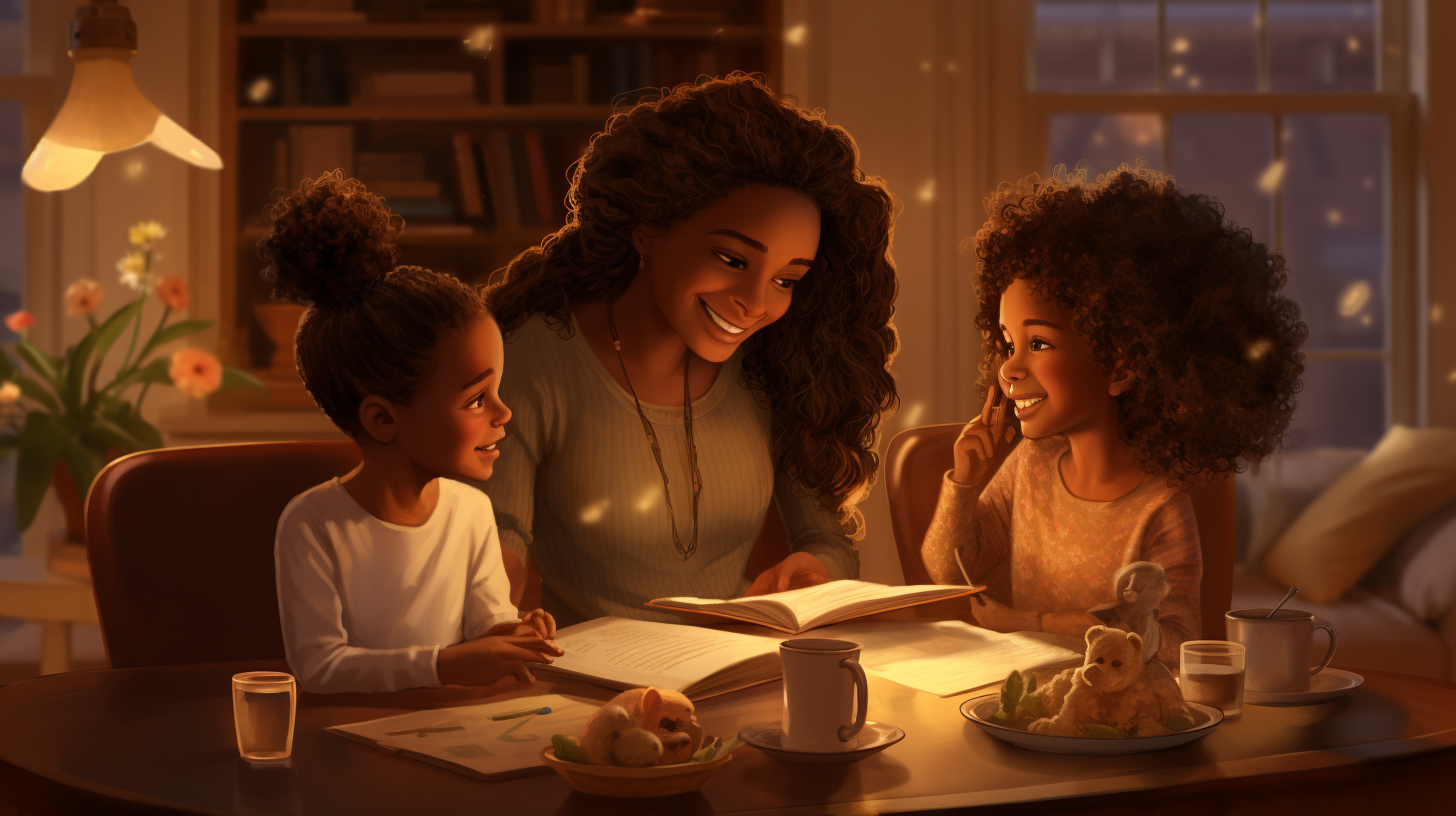As a parenting practitioner with over 15 years of experience advising families, I know that parenting in general can be challenging, but parenting around issues of race and racism brings its own unique concerns. Many caregivers want to raise anti-racist children but aren’t sure where to start.
My clients often ask me how they can best support their children of color, have constructive conversations about race with their white children, and help all children develop resilience in the face of racism.
This is not easy work, but it is necessary and rewarding. With empathy, patience, and the right tools, we can equip our children to navigate issues of race and racism in productive ways. Here is my guide for caregivers based on current research and my own experience.
Why We Must Talk to Our Kids About Race
Children start noticing racial differences extremely young. Babies as early as 6 months old pay attention to skin color, just as they notice other physical features. By ages 2-4, kids can pick up on racial biases they observe in society. Without intervention, these biases become more pronounced over time.
For instance, studies show that by age 5, children may already display preferences toward certain racial groups. They can also show signs of racism, like excluding peers based on race.
As kids get older, lack of communication on these topics can leave them ill-equipped to process racism when confronted with it. Silence teaches kids that race is shameful or taboo, preventing them from confiding concerns.
Talking about race allows us to celebrate diversity with our children. It builds their empathy for others and helps them recognize unfair treatment.
While racism still exists, the way our kids’ generation handles it can be different. But for that to happen, we must speak up.
It Starts With Our Values
To have constructive talks about race, I ground discussions in my family’s core values, like:
- Equal treatment and human dignity for all
- Justice, fairness, and standing against discrimination
- Openness to different perspectives and experiences
I emphasize that racism contradicts these beliefs. Expressing my values sets the tone for kids to develop their own anti-racist principles.
Listen First, Then Share
Before diving into heavy topics, I start by asking my kids questions to grasp their current thinking. I remain non-judgmental, so they know they can be open.
Based on their understanding, I share information suited to their age and experience. I’m always honest about my own background and feelings as well.
While I don’t claim to have every answer, showing my willingness to listen and learn together builds trust.
Age-Appropriate Conversations
The best way to discuss racism adapts based on a child’s developmental stage. Here are some expert tips on tailoring talks to different ages:
Preschoolers (Ages 2-5)
- Focus on fairness and kindness. Kids this age have a strong sense of fairness. Discuss treating others kindly, regardless of skin color or other differences.
- Use examples they relate to. Ask how they would feel if excluded from activities based on physical features. Then connect it to real racism.
- Don’t shush questions. If they ask about race openly, see it as a chance to discuss, not to hush them.
Grade Schoolers (Ages 6-11)
- Discuss examples in everyday life. Use situations they observe, like bullying, as chances to build empathy for victims of racism.
- Ask lots of questions. Get a sense of what they already think, then fill knowledge gaps. Introduce different perspectives on racism.
- Share your openness. Make it clear you welcome their questions and want to discuss their feelings about race issues in the news or in their lives.
Middle & High Schoolers (Ages 12+)
- Inquire about their knowledge. What do they learn at school or hear from friends? This shows you where to focus talks.
- Brainstorm responses. Teens may feel helpless about racism. Discuss ways they can take action, like speaking up for others.
- Encourage media analysis. Analyze racial representation together in their shows, news, and social media feeds. Consider diversity in their own friend groups.
While kids this age have more understanding of systemic racism, they still need parents’ guidance in processing and responding to it.
Continue the Conversations
A one-time lecture won’t cut it. Regular communication is key, even when kids don’t seem engaged.
Racism comes up in my family while:
- Watching TV and movies
- Preparing foods from diverse cultures
- Reading books with various characters
- Discussing news events involving racial issues
- Examining our own friend circles and communities
I let my kids know they can always voice concerns about race. By making this an ongoing dialogue, we have built trust to discuss events like police brutality protests.
Though my 8-year-old sometimes responds with “That’s sad,” while my 13-year-old asks tough questions, I persist. Racism affects them whether I talk about it or not.
What If I Don’t Know the Answers?
When kids ask something I can’t answer, I explain that I’ll look into it and we’ll learn together. I also consult teachers, doctors, books, and other resources to fill gaps in my own knowledge.
Demonstrating openness to improve our understanding sets a great example for children.
Fighting Racism as a Family
Discussing racism is only the start. As caregivers, we also set examples daily through our actions.
Here are ways I engage kids in anti-racism:
Foster Diverse Friendships
We choose diverse schools, clubs, and neighborhoods to expose kids to different cultures. They learn that kindness crosses racial lines.
Read Stories Promoting Representation
We make sure literature and media in our home represents people of all races and cultures in positive roles. Seeing heroes and role models who look like them empowers kids.
Speak Up Against Injustice
When we encounter racism, I explain why it is wrong and how we can respond. I encourage kids to speak up too. Even small actions like writing a letter carry weight.
Learn About Other Cultures
Trying cuisines, music, and holidays beyond our own traditions expands our knowledge of the diverse world we live in.
Support Black Children’s Identities
For caregivers of Black children, surrounding kids with positive representations of Black culture is key for building pride in their heritage.
Talking about race and racism takes courage, but avoidance only allows ignorance and injustice to persist. By having open minds and open hearts as caregivers, we can raise anti-racist children poised to build a more just society.
When you talk to your kids, what has worked and what challenges have you faced? I’d love to hear your stories and insights in the comments.

